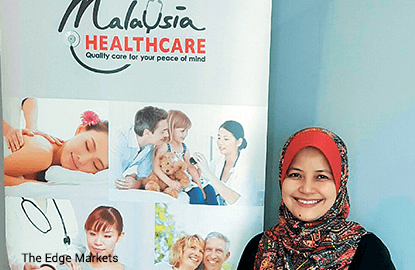
This article first appeared in The Edge Financial Daily, on March 15, 2016.

It’s a practice that has been going on for thousands of years. Recorded history showed Greek pilgrims from all over the Mediterranean visiting the Saronic Gulf called Epidauria, sanctuary of the healing god Asklepios. Throughout the centuries, people have travelled near and far in search of better or cheaper medical help, and the practice has become so popular in recent years that the term “medical tourism” was coined to describe this phenomenon. Every year, thousands of people traverse the globe to escape the high cost of health care and long wait times in their own countries in search of cheaper options elsewhere. For instance, according to Time, a liver transplant in the United States typically costs US$300,000 (RM1.2 million) but only US$91,000 in Taiwan.
In countries such as Canada, where a public healthcare system ensures that every citizen enjoys free medical services, there are long waiting lists for even routine procedures. Patients may endure months of waiting before they are wheeled into an operating theatre. Most of these people end up in countries such as Costa Rica, Ecuador, India, Jordan, Mexico, Singapore, Thailand, Turkey and Malaysia — countries that are famed for their advanced private healthcare systems that often charge reasonable rates for complex procedures.
The Malaysia Healthcare Travel Council (MHTC) is Malaysia’s official government body promoting medical travel, and at its help, Sherene Azli is on a mission to make our country a prime destination for people abroad who are seeking medical treatment. Sherene was with TalentCorp and Telekom (M) for many years, working in the marketing department prior to joining MHTC. Talent Corp enabled her to work with Malaysians abroad from a myriad of backgrounds, encouraging them to come home to Malaysia. It was then that she realised her interest in the healthcare industry.
“What inspired me to move over to MHTC was my wanting to make a difference. My stint in Talent Corp opened up my horizons in terms of how we can contribute to nation building from all the different areas. Being in the private sector all my life, here, there’s a more national agenda, developing the medical tourism industry for the country and helping the economy grow,” Sherene explained.
MHTC is responsible for the development of strategies and programmes carried out by working together with various stakeholders such as the Association of Private Hospitals of Malaysia, Malaysia External Trade Development Corp, Malaysian Investment Development Authority, Tourism Malaysia and Malaysian Dental Association to bring Malaysian medical tourism to the forefront. MHTC also coordinates promotional activities for Malaysian healthcare providers and related stakeholders. MHTC acts as a focal point or a ‘one-stop centre’ for all matters related to healthcare travel, to facilitate enquiries on policies and programmes on healthcare travel development and promotion, including solutions on matters related to healthcare travel. MHTC is not only the promotional arm of the government, but also a referral point to assist healthcare travellers and members in the healthcare travel industry in Malaysia.
“Our private healthcare system has grown to be very strong; the quality is now recognised as one of the best in the world — with more than 250 hospitals and private clinics, we now have excess capacity,” said Sherene.
“With the quality of care, affordability and accessibility — these are strong propositions for anyone out there, not just Malaysians who are looking for medical care.”
Malaysia focuses on several “centres of excellence”, that is, a certain number of facets in healthcare that we have more expertise on. These key areas include oncology, neurology, orthopaedics, cardiology, urology, in vitro fertilisation (IVF), cosmetic surgery, ophthalmology and dentistry. However, whenever MHTC travels to other countries to promote Malaysia as a medical destination, the presentations are tailored according to the locality.
“For example, when we go to China — which has their strengths in oncology, for instance — we don’t push treatments that they are already good at. In China, we sell IVF because that is what they’re interested in now with the removal of the one child policy,” Sherene elaborated.
MHTC does research on the needs of each market before going there, so that the team is able to reach their target audience more effectively. The centres of excellence serve as the base for each of the core markets that they are trying to promote medical tourism in Malaysia to. This is reflected in their approach in the Australian market — they are advanced in most forms of healthcare, all of which are covered by their public healthcare system with the exception of dental work, which is very expensive there. So what MHTC does is promote dentistry in Malaysia to Australians with the hope that they will be more inclined to come over to have their dental work done.
Sherene’s goal for MHTC is to make Malaysia “the destination” for medical treatment, so that foreigners who are looking to undergo procedures in Malaysia will come to MHTC as a one-stop centre for all the information that they need.
“Not many people know [about] MHTC for now. They know about Malaysia, and individual hospitals such as Prince Court or Gleneagles. But how do they know that they’re getting the best treatment? So, the idea is for us to push MHTC so that in the future, when people want to find anything about healthcare services, they’ll come here for advice — although we don’t own any hospitals. We are helping to build the business for other hospitals while providing useful information for travellers,” Sherene explained.